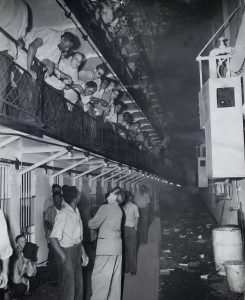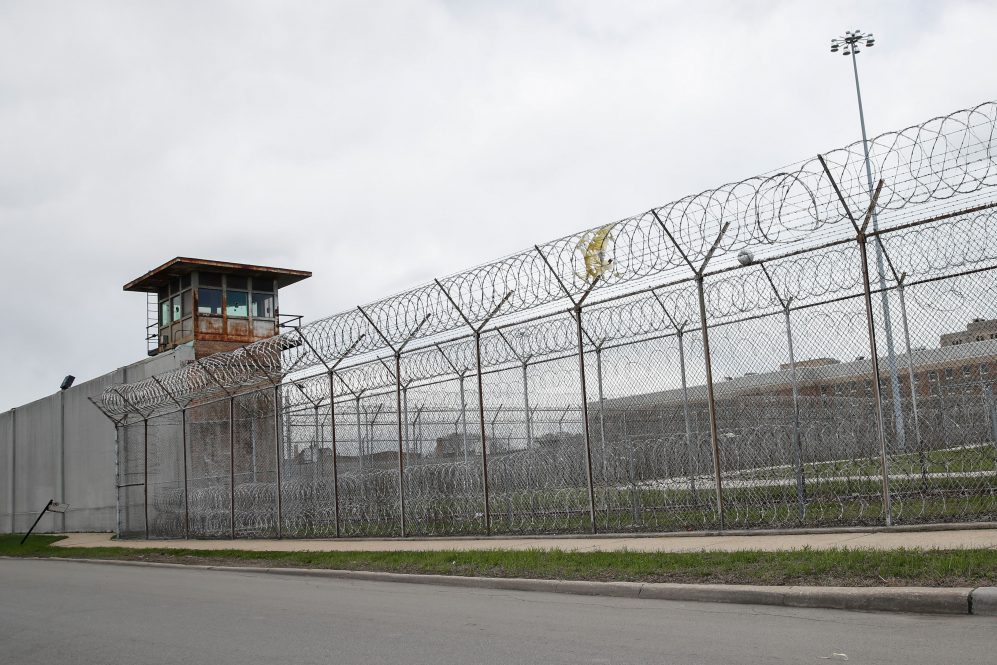The 20th century saw a significant increase in the rate of incarceration in the United States. Assistant Professor of History Melanie Newport studies jails, where the bulk of incarceration occurs, to better understand what shaped this startling trend.
In her new book This is My Jail: Local Politics and the Rise of Mass Incarceration, Newport focuses on the history and politics of Chicago’s Cook County Jail and what its story can tell us about the expansion of jails nationwide. Newport met with UConn Today to discuss jails and how we can shape how they are run.
What led you to study the history of jails and specifically Cook County Jail?
I was a policy historian looking for a policy issue at an interesting moment when there was growing political mobilization around criminal justice issues. I was moving into a very new field in history looking at criminal justice history, particularly in the late 20th century, to get the big picture of the field and I wanted to try this by looking at jails. It was a great fit because as an undergraduate, I had worked for my local county on a data processing project. I knew county archives and politics, but it hadn’t occurred to me that this was something to study, because everybody around me was studying state prisons.
I started looking at different national examples, including the big problem jails in LA, New York, and Boston. Then I hit upon Chicago and Cook County Jail, which had way more newspaper coverage, especially in the 1970s. It was in the 70s when a warden named Winston Moore emerged at the center of this firestorm about overcrowding and poor conditions at Cook County Jail.
Moore raised so many questions for me because he’s African American, he’s being held up as someone asserting community control over the jail in a moment of “faces in high places” Black politics, and at the same time he’s allied with both Republicans and Democrats; he was talking about how he was a victim of racist conspiracies. He’s an interesting character and one of those people who speaks through the sources. Through him, I realized I was dealing with a bigger story.
It was one of the little perfect moments of obsession that motivates historians. Eventually, I came to the question of how Cook County Jail got so big and what can we learn from it, not as an isolated case study, but as an example of the logic of jail expansion happening in the late 20th century.
Jails are misunderstood and dynamic places, with many forces influencing them ranging from shifts in social norms to pandemics. Both aspects seem like they can make studying, teaching, and even advocating about jails difficult. How did the project evolve as you learned more?
This is a human story. It’s about life or death. It’s about the opportunities people have in cities and how they negotiate issues like racism and segregation. My research question changed from “how did the jail get so big” to “how does anybody justify having a jail at all?” When we see the rich and dynamic history of people confronting the harms of jailing for 200 years, it’s a very different story.

Through the interdisciplinary communities that we have at UConn—through American Studies, through the Africana Studies Institute, Urban and Community Studies, and through our excellent history department– I got much more into thinking about social history methods that look at the lived experience, which allowed me to bring in the story of jailed people and their politics. I’m thinking about what the space means as both an urban space and a place where we can put political resources.
This is really a UConn project, it’s because I was able to essentially borrow methods from these amazing interdisciplinary communities that I’m a part of here to reveal a much richer story.
We also must reckon with the fact that the most politically active people in our society think that jailing is a good idea. In the book, most advocates around jail conditions, for the bulk of the story I’m telling, are moderate liberals, so part of the story that I’m telling is about good intentions. People want good things for people in jail, but it might not be what’s best for those people, or what people in jail feel they need. That was an assumption that, especially as somebody who is white working in African American history, I had to get to the bottom of, because as we know, Dr. King raised the issue of the white liberal.
People don’t know what questions to ask about jails, and the learning curve is steep. We’re seeing an uptick in mobilizations around jails but the definitions that people give jails—about being purely oriented toward pre-trial incarceration and people serving short sentences– don’t match what’s going on in terms of these functioning essential political institutions. These processes of learning and unlearning are key.
Even for some advocates that were engaged for 30 or 50 years of activism around the jail, they got to the point in the 1990s, where conditions were still terrible. They found that reform reflected not just their political goals, but the political goals of racist sheriffs and people who thought jail construction and other punitive solutions were a good idea. Hopefully, while this is a story about what it means to have political efficacy and to have a voice, it shows t things don’t always go the way you hope they’re going to go.
One line of research you drew from was newspapers and radio broadcasts produced by the prisoners as well as television shows where the prisoners were featured. How did these accounts shape your work?
What’s so mind-blowing about that set of sources is that usually where newspapers exist in prisons and jails, they’re heavily censored. If you look at Rikers, at the same time, their newspapers are kind of boring, because people are not allowed to be politically honest in the way they were in Cook County Jail.
The TV shows were completely unusual for any kind of incarcerating institution, in that you would have the prisoners sitting there being extremely candid about things like not being able to get a job because they’d been to jail. That was, for me, an important opportunity to convey to readers the hearts, minds, and viewpoints of these incarcerated people. Their stories resonated with conversations that I’ve been having with lawyers, prisoner rights activists, and formerly incarcerated people for years.
Sources like this speak to the power of the humanities. Even though we’re dealing with difficult stories about policy and state violence, the humanities offer us an exciting opportunity to get into the richness and pain of the human experience. The fact that the humanities can teach us about what it means to live through policy and political change is deeply meaningful if we’re going to try and have a clearer sense of what it means to be an American. That was part of why I was so excited to be able to not just tell this story from government documents or legal documents, which we’ve relied on as historians, but to be able to incorporate film, literature, television, and radio as different ways that people processed the experience of incarceration.
I thought it was a good way to try and cut through what policy and policymakers say about these people to see what they say about themselves. It’s extremely compelling because people are great at telling their own stories.
What is one takeaway about jails that you’d like readers to have?
Generally, I think we need a much wider recognition that for the 3,000 jails in the United States, jails are political institutions, and that community members, including jailed people, have a stake in how they’re run. We must take these politics seriously; these are places that reflect our values.
What does it mean to give resources to jailing, especially for people who are presumed innocent before trial? What does it mean for all of us in the United States to be accountable for the kind of harm that jailing does, and the kind of choices that we make about choosing jail, instead of choosing education funding, choosing free lunches for kids, the kind of welfare spending that lifts children out of poverty? I’m hoping a wider audience will connect with these questions.



